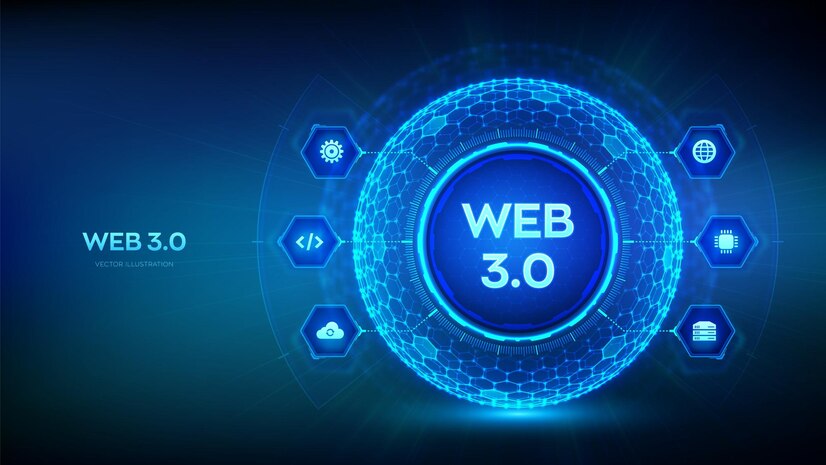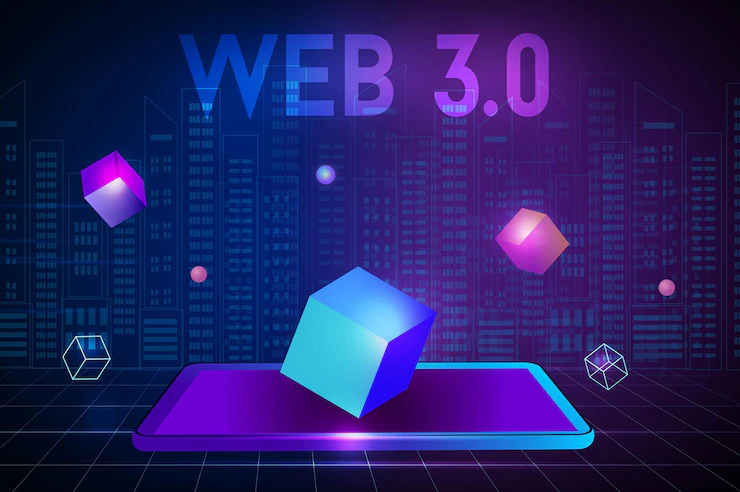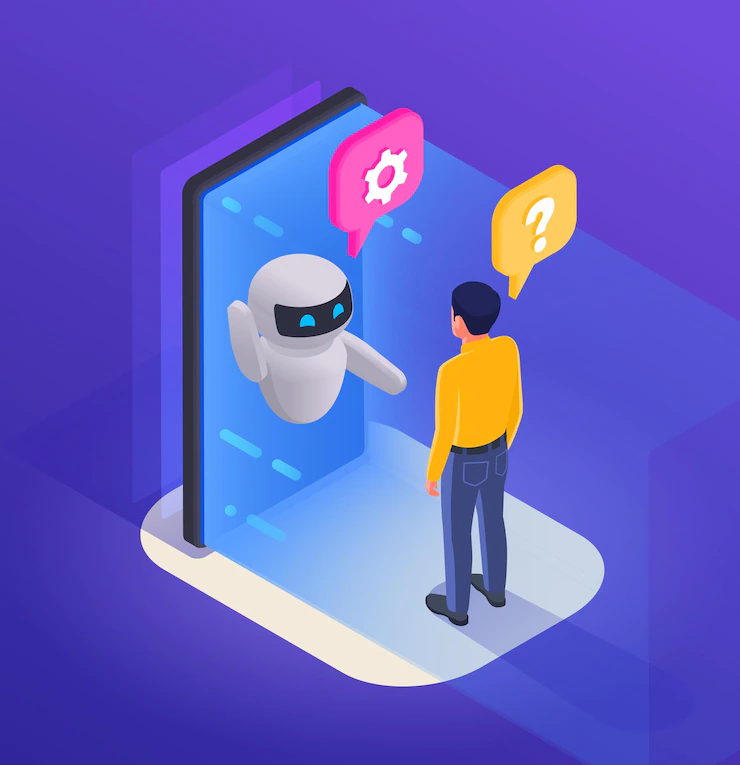Web 3.0 is the latest iteration of the World Wide Web that is built upon the principles of decentralization and the utilization of distributed computing
Welcome to the digital age, where we are rapidly advancing towards a world powered by Web 3.0. With the emergence of Web 3.0, the digital landscape is quickly undergoing a transformation that promises to revolutionize the way we interact with technology and the internet.
In this blog, we'll explore the concept of Web 3.0, its benefits, technologies and trends, and the impact it has on digital marketing. We'll also discuss the advantages and challenges of using Web 3.0, as well as some examples of successful projects. Finally, we'll look at the future of Web 3.0 and how it's shaping the digital world.
So, let's dive into the world of Web 3.0 and see how it's revolutionizing the digital landscape.
What is Web 3.0?
Web 3.0 is the latest iteration of the World Wide Web that is built upon the principles of decentralization and the utilization of distributed computing. This new version of the internet will enable the development of smart-contracts, distributed computing networks, and decentralized storage solutions. It is also expected to create a more secure and efficient web experience, with a focus on user privacy and data protection.
At its core, Web 3.0 is focused on empowering users to own and control their data, as well as creating a more transparent and secure online environment. The goal is to make the internet more accessible and secure for everyone, regardless of geographic location or economic status.
In essence, Web 3.0 is a platform that will enable the development of a new generation of applications, services, and tools that will further revolutionize the digital landscape.
Benefits of Web 3.0
Web 3.0 will bring a variety of benefits to the digital landscape. Here are just a few of the potential advantages of Web 3.0:
- Increased privacy and data protection: Web 3.0 will enable users to have more control over their data and how it is used. This will help increase the overall privacy and security of the internet.
- Improved user experience: Web 3.0 will make the internet easier to use and more intuitive for users. This includes features such as improved search capabilities, better content personalization, and more accurate and efficient data analysis.
- Greater transparency: Web 3.0 will allow for more transparency in the way data is shared across the web. This will help reduce the risk of fraud and other malicious activities, as well as increase user trust in online services.
- Increased accessibility: Web 3.0 will make the web more accessible to everyone, regardless of geographic location or economic status. This will help bridge the digital divide and help more people access the internet and its services.
Web 3.0 technologies and trends
One of the key technologies of Web 3.0 is blockchain, which is a digital ledger of records that is stored in a distributed network. This distributed network helps to ensure the accuracy and security of the data stored in the ledger.
Another important technology is decentralized storage, which is a type of cloud-based storage system that is not controlled by a single entity. This type of storage system is more secure and reliable than traditional cloud-based storage solutions, as it is not vulnerable to attack from a single point of failure.
In addition to these technologies, there are also a number of emerging trends in the Web 3.0 space. These include the use of artificial intelligence (AI) and machine learning (ML) to improve the accuracy and efficiency of data analysis, as well as the development of virtual and augmented reality (VR/AR) applications.
Understanding the convergence of Web 3.0 and AI
The convergence of Web 3.0 and AI is a powerful combination that is transforming the digital landscape. By combining AI and Web 3.0, we are able to create smarter, more efficient applications that can automatically analyze data and make decisions based on the results.
For example, AI-powered applications can be used to help identify potential fraud or malicious activity, as well as to provide more accurate and personalized online experiences for users. AI can also be used to automate the process of data analysis, which can help reduce human error and improve the accuracy and efficiency of data analysis.
In addition, the use of AI can help to improve the security of Web 3.0 applications and networks, as AI-powered algorithms can be used to detect and prevent malicious activity.
Impact of Web 3.0 on digital marketing
Web 3.0 is also having an impact on the world of digital marketing. For example, AI-powered tools can be used to create more personalized advertising experiences for users. This can help to increase the effectiveness of digital marketing campaigns and improve ROI for marketers.
In addition, blockchain technology can be used to create more secure and transparent digital advertising networks. This can help to reduce fraud and increase user trust in digital advertising.
Finally, the use of decentralized storage solutions can also help to reduce costs and improve the scalability of digital marketing campaigns. This can help to make campaigns more cost-effective and allow marketers to reach larger audiences.
Advantages of using Web 3.0
The advantages of using Web 3.0 are numerous. Here are some of the key benefits of using Web 3.0:
- Increased security: Web 3.0 applications and networks are more secure than traditional web applications. This is due to the use of distributed networks and blockchain technology, which helps to ensure the accuracy and security of data.
- Improved user experience: Web 3.0 applications are more intuitive and easier to use than traditional web applications. This can help to improve the overall user experience and make the web more accessible to everyone.
- Greater transparency: Web 3.0 applications are more transparent than traditional web applications. This can help to reduce the risk of fraud and malicious activity, as well as increase user trust in online services.
- Reduced costs: Web 3.0 applications are often more cost-effective than traditional web applications. This can help to make digital marketing campaigns more cost-effective and allow marketers to reach larger audiences.
Challenges of using Web 3.0
As with any new technology, there are also some challenges associated with using Web 3.0. Here are some of the key challenges of using Web 3.0:
- Lack of standards: Web 3.0 applications are still in the early stages of development, and there is currently no established set of standards for developing applications. This can make it difficult for developers to create applications that are compatible with all platforms and browsers.
- Limited scalability: Web 3.0 applications are limited in terms of scalability. This can make it difficult for developers to create applications that can handle large amounts of data and traffic.
- Complexity: Web 3.0 applications can be complex to develop and maintain. This can make it difficult for developers to create applications that are user-friendly and intuitive.
Examples of successful Web 3.0 projects
There are already a number of successful Web 3.0 projects that have made an impact on the digital landscape. Here are a few examples of successful Web 3.0 projects:
- Ethereum: Ethereum is a decentralized platform that is powered by blockchain technology. It enables developers to create and deploy decentralized applications (dApps) and smart contracts.
- Filecoin: Filecoin is a decentralized storage network that enables users to store, share, and access data securely and efficiently.
- Brave: Brave is a web browser that is built on the principles of privacy and data protection. It enables users to browse the web securely and anonymously.
Future of Web 3.0
The future of Web 3.0 looks bright, as it promises to revolutionize the way we interact with technology and the internet. We are already seeing the emergence of new applications and services that are powered by Web 3.0, and this trend is only expected to grow in the coming years.
We can also expect to see Web 3.0 become more integrated with artificial intelligence (AI) and machine learning (ML) technologies. This combination of technologies will enable the development of smarter and more efficient applications that can automate the process of data analysis and make decisions based on the results.
Finally, Web 3.0 is also expected to help bridge the digital divide and make the internet more accessible to everyone, regardless of geographic location or economic status. This will help to create a more equitable and secure online environment for everyone.
Conclusion
Web 3.0 is quickly transforming the digital landscape and ushering in a new era of the internet. It is a platform that is focused on empowering users to own and control their data, as well as creating a more secure and efficient web experience.
Web 3.0 will bring a variety of benefits to the digital landscape, including increased privacy and data protection, improved user experience, greater transparency, and increased accessibility. It will also enable the development of smarter and more efficient applications that are powered by artificial intelligence and machine learning.
Finally, Web 3.0 will help to bridge the digital divide and make the internet more accessible to everyone. This is an important step towards creating a more equitable and secure online environment for everyone.
The future of Web 3.0 looks bright, and it promises to revolutionize the way we interact with technology and the internet. So, if you want to stay ahead of the curve, now is the time to start exploring the possibilities of Web 3.0.






Enquiry: